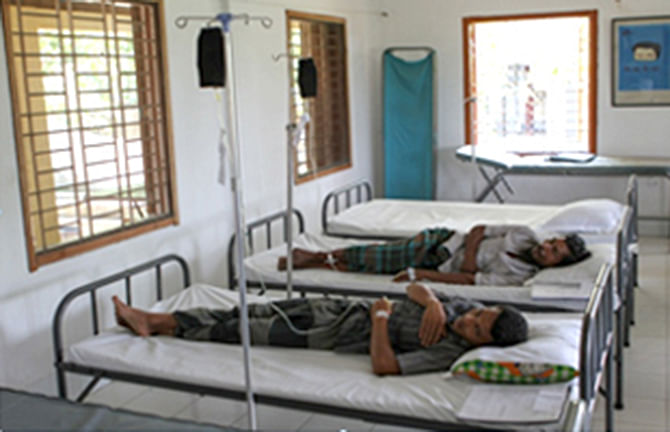MoU inked to eradicate kala-azar
MoU inked to eradicate kala-azar

The governments of Bangladesh, Bhutan, India, Nepal and Thailand today signed a Memorandum of Understanding to collaborate in effort for eradicating the deadly disease, kala-azar.
Over 147 million people in South-East Asia are at risk of contracting this life-threatening disease, mainly in Bangladesh, India and Nepal. Recently, sporadic cases were reported from Bhutan and Thailand as well, says the World Health Organisation (WHO).
“If we collaborate, we can surely eliminate the threat of kala-azar,” Bangladesh Health and Family Welfare Minister Mohammad Nasim told reporters after signing the MoU at Hotel Sonargaon in Dhaka.
Bangladesh is hosting the four-day WHO regional conference that commenced from today. Other participant countries of the event are Bhutan, Democratic People’s Republic of Korea, India, Indonesia, Maldives, Myanmar, Nepal, Sri Lanka, Thailand and Timor-Leste.
The WHO says since over 50 percent of the cases in the three main affected countries occur in areas close to international borders, countries need close collaboration, apart from national efforts, to eliminate the disease.
“Kala-azar elimination is within our reach and WHO is committed to it”, said Dr Poonam Khetrapal Singh, WHO Regional Director for South-East Asia.
Areas for collaboration among the five countries will include mutually agreed arrangements of resource mobilization, exchange of information, research, capacity building and technical support.
Kala-azar (Visceral Leishmaniasis) is debilitating and often fatal if left untreated. It is transmitted by sand flies, which breed in moist soil, caves, cracks in mud walls and rodent burrows. The poor population in rural areas are at the greatest risk.
Associated with malnutrition, poor housing and illiteracy, kala-azar prolongs the cycle of poverty as people cannot afford treatment and therefore cannot work.
Elimination of kala-azar means reducing the cases to a level where it is no longer a public health problem. The target is to achieve less than one kala-azar case per 10000 population annually.